All products featured are independently chosen by us. However, SoundGuys may receive a commission on orders placed through its retail links. See our ethics statement.
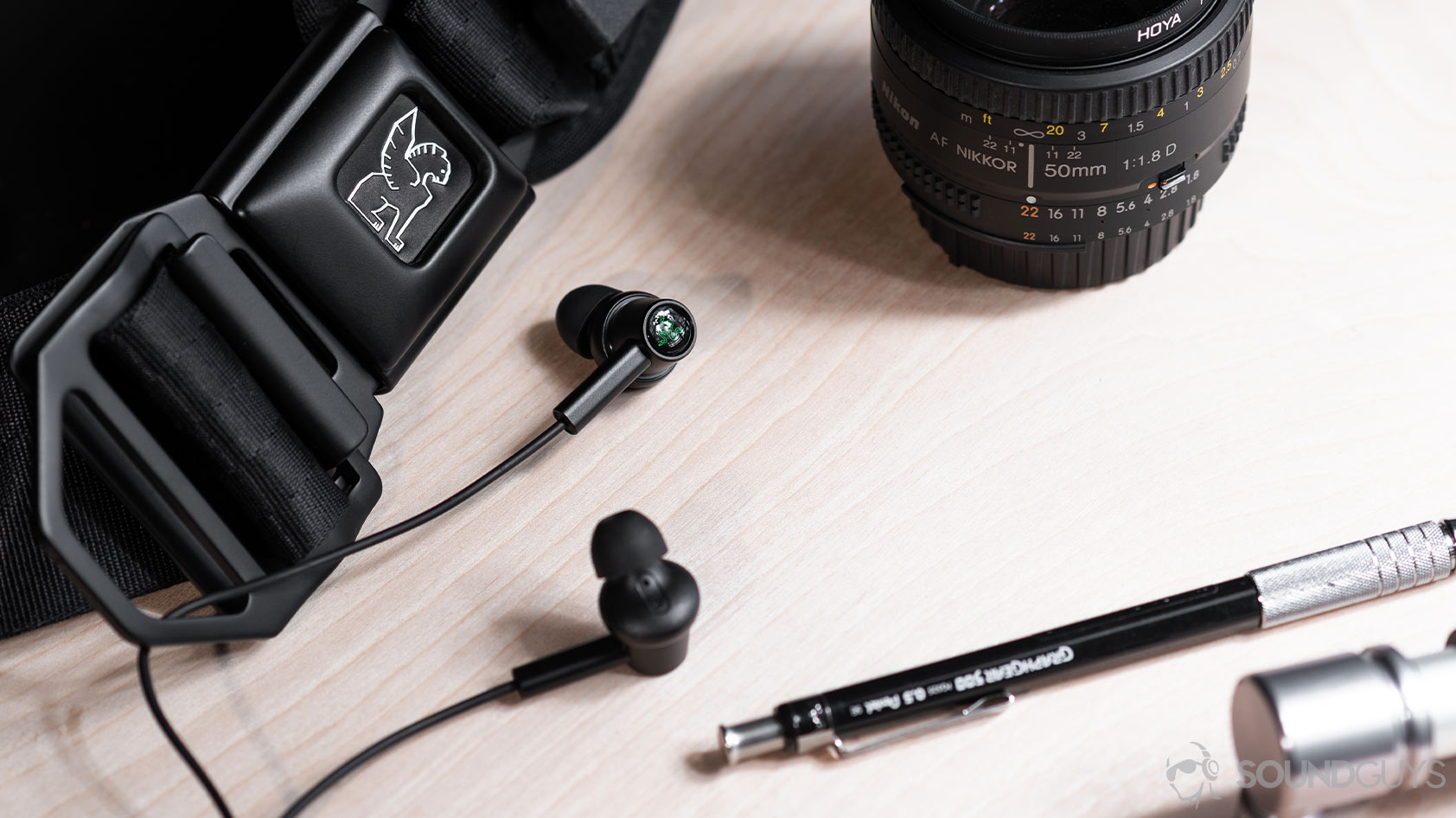
Razer Hammerhead Duo review
Published onJuly 17, 2022
Razer Hammerhead Duo
Razer is known for its gaming peripherals, but the company steps away from its typical ESports lineup with the Razer Hammerhead Duo wired earbuds; these in-ears aren’t just limited to gamers. While this offers little in the way of features, you’re making an investment in sound quality, rather gimmicky add-ons.
How does Hammerhead Duo fare as a set of everyday earbuds for mobile gamers? We spent a week with the Hammerhead Duo buds to find out.
Editor’s note: this Razer Hammerhead Duo review was updated on July 18, 2022, to update the format and Alternatives section.
- Aesthetically, these earbuds are targeted toward gamers, but the accurate frequency response and ergonomic design make them appealing to all audiences.
- Listeners who value a lightweight form factor will appreciate the Hammerhead Duo.
What’s it like to use the Razer Hammerhead Duo?
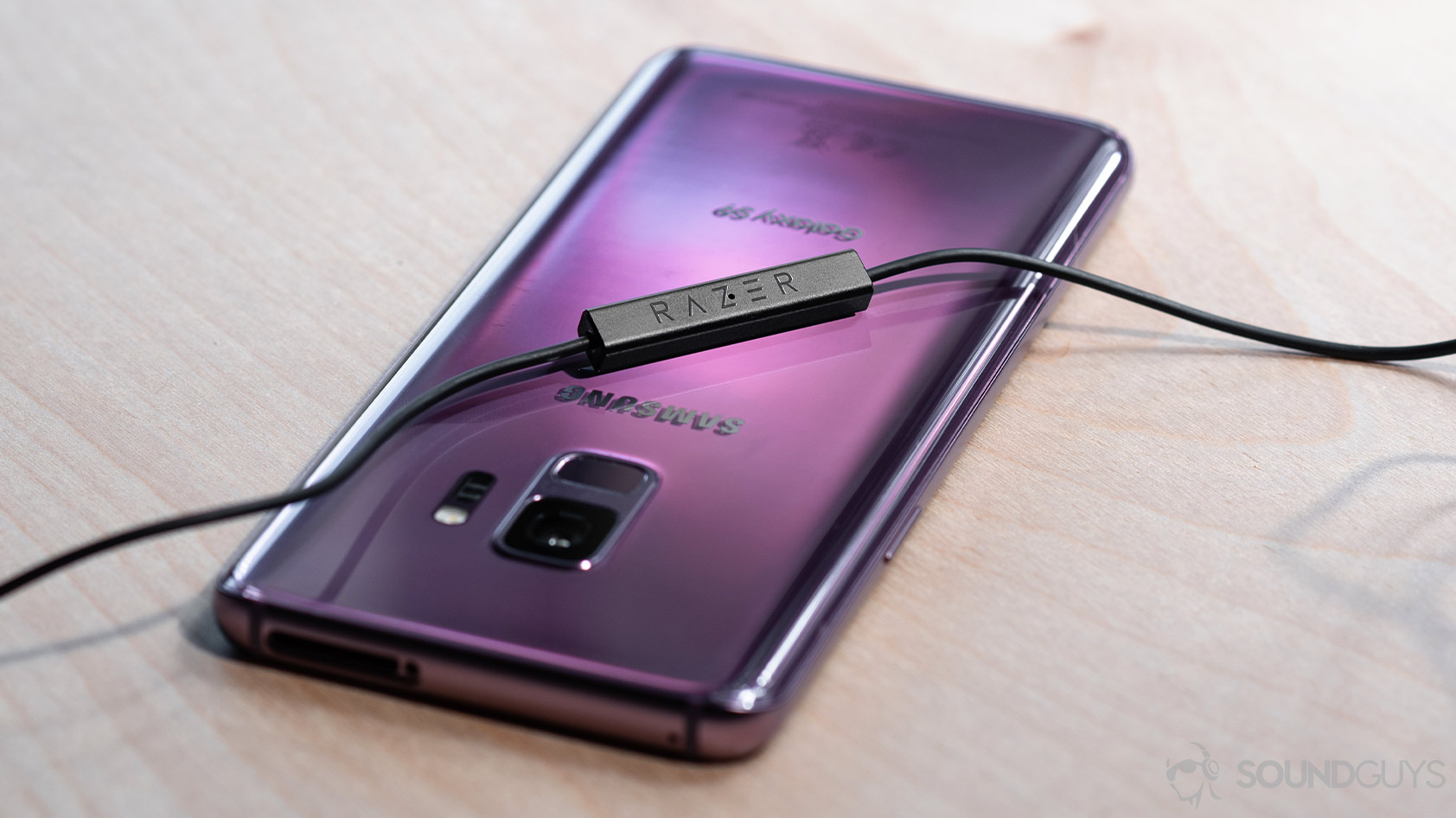
The Razer Hammerhead Duo is a basic pair of wired earbuds, which isn’t said to disparage it: aluminum housings keep them lightweight and durable, while the braided cable combats tangling. Due to the angled nozzles and soft silicone sleeves, wearing the earbuds for extended periods is comfortable. Be warned, though: the ear tips are dust magnets.
The omission of any cable management at the Y-splitter is disappointing, though, especially for $60 USD earbuds. What’s more, the stress relievers, particularly the one at the base of the L-shaped 3.5mm jack, aren’t very effective. Instead of ending in a plastic nub, it would be beneficial for a softer material like silicone to taper off and give the cable more support without sacrificing flexibility.
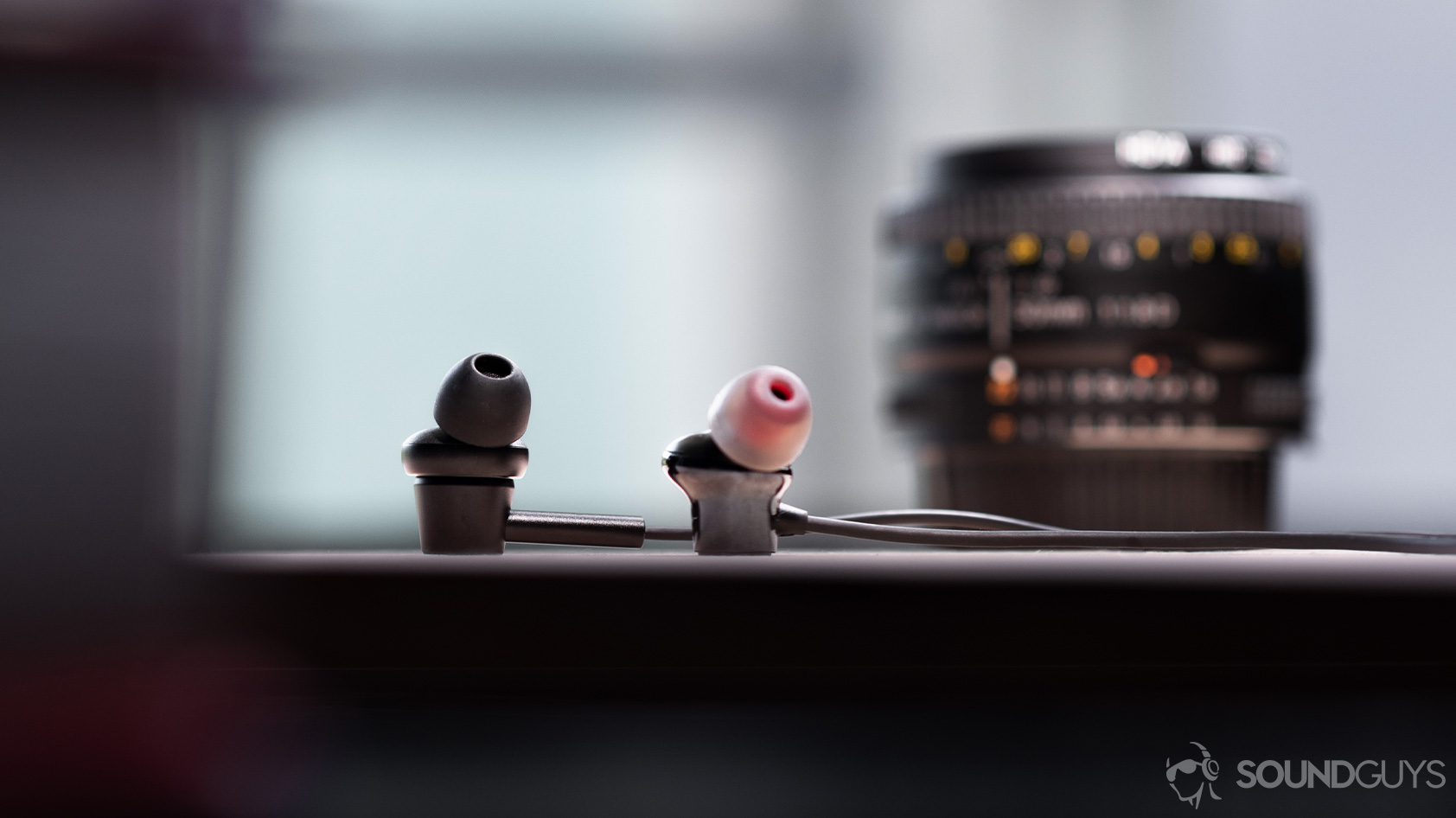
Other than that, the Razer Hammerhead Duo is a pleasure to use. The name is derived from the dual-driver system inside each earbud. One driver handles bass frequencies while the other is responsible for mids and treble reproduction. Listeners reap the benefits of this technology by enjoying clear, accurate playback.
An integrated mic and remote unit breaks up the right cable. Its sleek design is at the detriment of functionality since the buttons rest nearly flush against the module and are hard to identify. Although it takes one or two tries to find the correct button, the option to skip tracks, adjust volume, take calls, and access your respective virtual assistant is convenient.
How do you connect the Razer Hammerhead Duo to your phone?
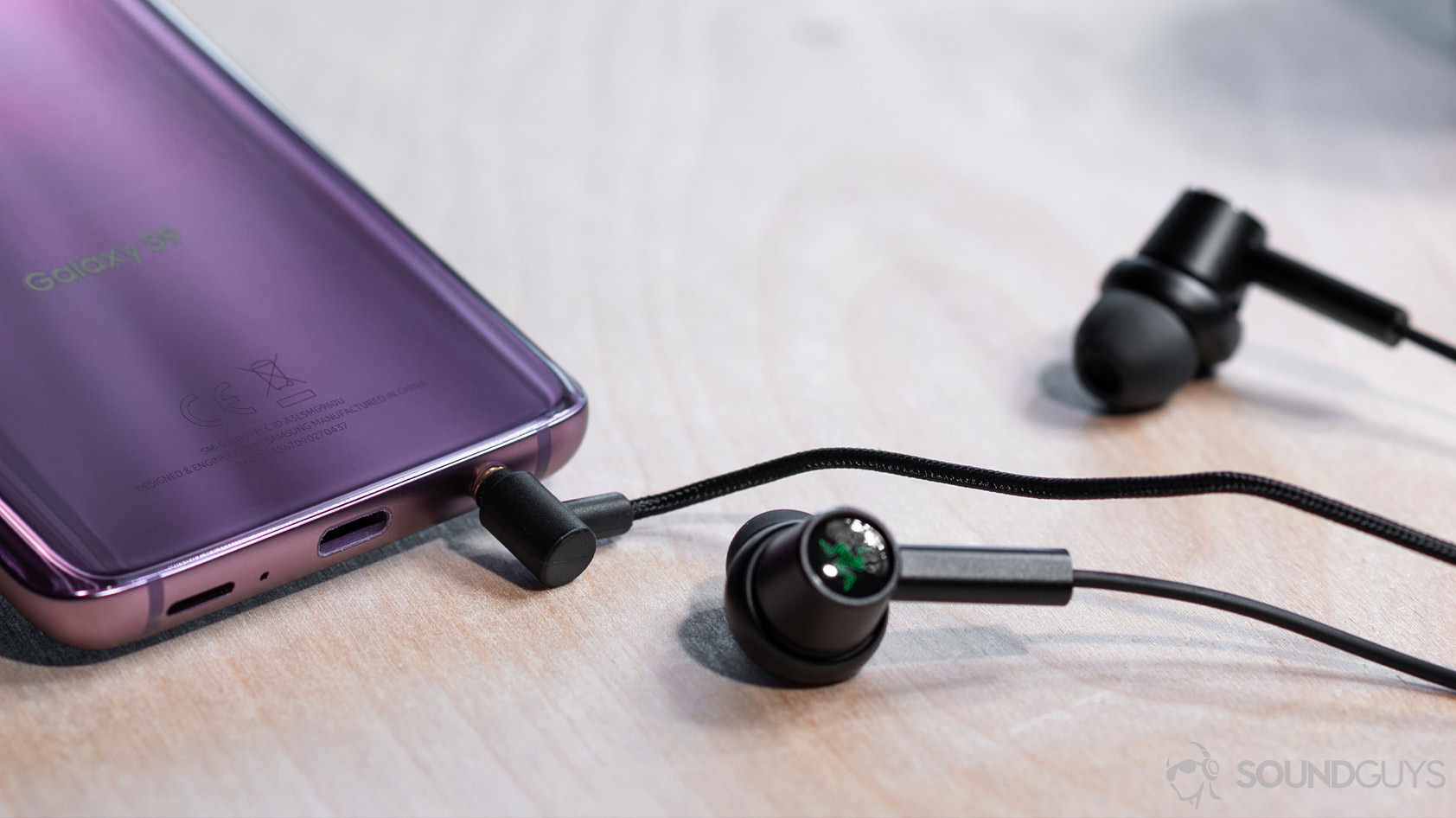
Since these are wired earbuds, there’s no need to pay attention to high-quality Bluetooth codecs. The Razer Hammerhead Duo returns users to simpler times of plug-and-play. Of course, you’ll need a dongle if your phone doesn’t have a headphone jack.
How does the Razer Hammerhead Duo sound?
If you came to Razer looking for bass-heavy earbuds, look elsewhere. The Hammerhead Duo outputs mids and bass frequencies at about the same loudness. This kind of frequency response works well with various musical genres and podcasts. As good as sound quality is, isolation falls short. Ambient noise easily penetrates the earbuds barrier, which can degrade audio quality, bass notes in particular.
Lows, mids, and highs
The Backseat Lovers’ song Pictures features reserved vocals and a controlled drum beat interspersed with guitar riffs. It opens with a single strum of an F chord to underscore Josh Harmon’s vocals. The first verse is relayed clearly. Notes picked off the bass guitar are easily distinguishable from the accompanying electric guitar.
The second chorus at 2:24 highlights the Hammerhead Duo’s shortcomings: when multiple loud instruments are introduced, the headset can’t quite relay everything clearly. At this point, Harmon’s voice is hard to hear over the electric guitars. This is pretty nit-picky, though, and not something you’re likely to notice if you listen to a song for the first time.
Hold up! Something’s different:
This article’s frequency response and isolation charts were measured with our old testing system. We have since purchased a Bruel & Kjaer 5128 test fixture (and the appropriate support equipment) to update our testing and data collection. It will take a while to update our backlog of old test results, but we will update this review (and many others!) once we’re able with improved sound quality measurements and ANC performance plots. These will be made obvious with our new chart aesthetic (black background instead of white).
Thank you for bearing with us, and we hope to see you again once we’ve sorted everything out.
Is the Razer Hammerhead Duo good for phone calls?
The Hammerhead Duo is fine for phone calls as long as the microphone doesn’t brush against any clothes. This happens intermittently due to its low placement. What’s more, it doesn’t effectively cancel wind noise. If you happen to take calls while sedentary, though, voice transmission is clear with minimal echo.
Razer Hammerhead Duo microphone demo (Non-standardized):
How does the microphone sound to you?
Should you buy the Razer Hammerhead Duo?
For $60 USD, the Razer Hammerhead Duo is a great pair of wired earbuds. Clarity is generally good and the understated design is appealing.
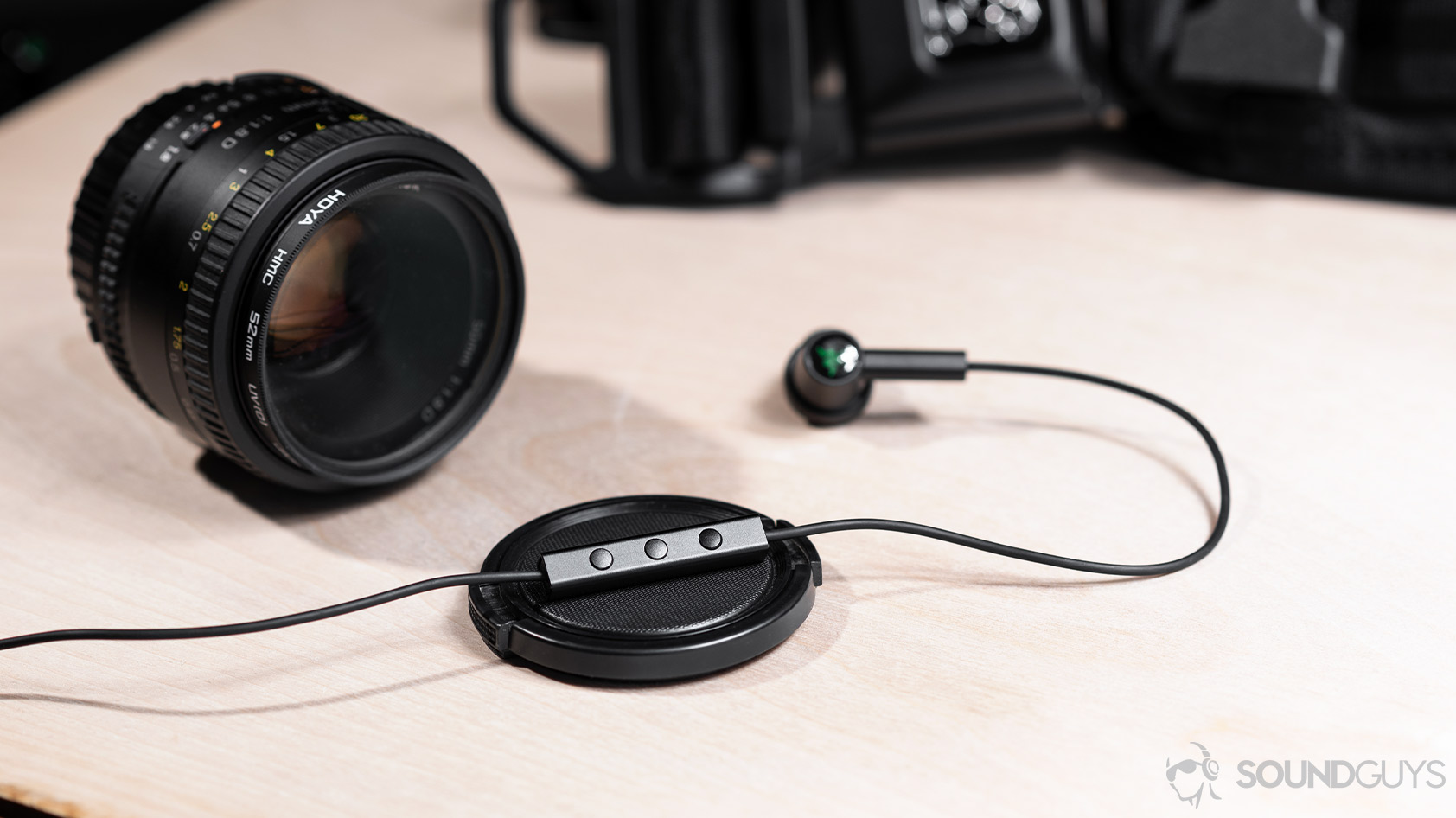
I wish there was some way to cinch the left and right cables together and that a carrying case was provided. Those are small features to forfeit for the sound quality afforded by these, though. Currently, only the Nintendo Switch edition of the Hammerhead Duo is well stocked. If you want a pair of earbuds with greater clarity and a louder bass response, get the Massdrop x MEE Audio Pinnacle PX.
The Razer Hammerhead True Wireless Pro and Hammerhead True Wireless look very similar to the wired Hammerhead Duo, and their USB-C Hammerhead alternative, but the technology is completely different. Razer’s true wireless earbuds connect via Bluetooth, which is great if your phone lacks a headphone jack. Rather than the button controls of the wired Hammerhead Duo, the true wireless models boast touch controls that work reliably well. The charging case is portable and makes it easy to stow the buds when inactive.
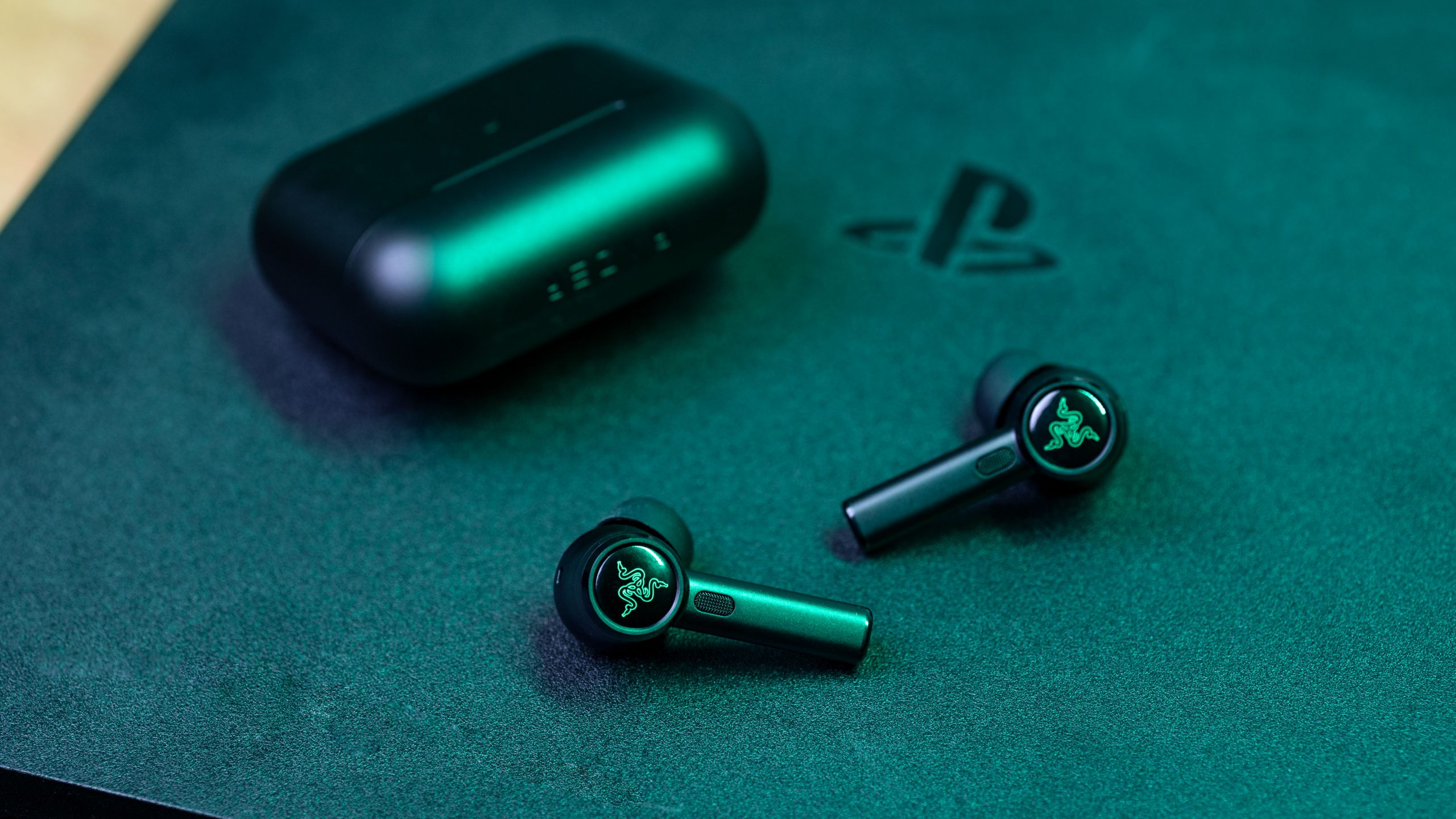
Not all is well and good with the Razer Hammerhead True Wireless and True Wireless Pro, though: the build quality is lacking, and sound isolation is just okay. The Hammerhead True Wireless Pro has an advantage over the Hammerhead True Wireless because the Pro variant features ear tips that seal to the ear canal. This is necessary because the Hammerhead True Wireless Pro also has noise canceling, which is dependent on effective passive isolation performance.
See also: The best Razer gaming headsets
Razer’s wireless earbuds support Gaming Mode, which is nice but it doesn’t make much of a difference in latency. It may be noticeable for video playback though, especially if you own an Android phone that performs poorly when streaming over the AAC Bluetooth codec. We highly recommend springing for the Razer Hammerhead True Wireless Pro model if you must go the true wireless route. Even still, there are better true wireless options around.

What should you get instead of the Razer Hammerhead Duo?
The most direct competitor to the Razer Hammerhead Duo is the JBL Quantum 50. This set of wired gaming earbuds costs about half as much as the Hammerhead Duo and has a more ergonomic design with a better control and microphone layout. Listeners who want a pair of earphones that they can take anywhere, and that sound pretty good for $29 USD, should read up on the JBL gaming earbuds.
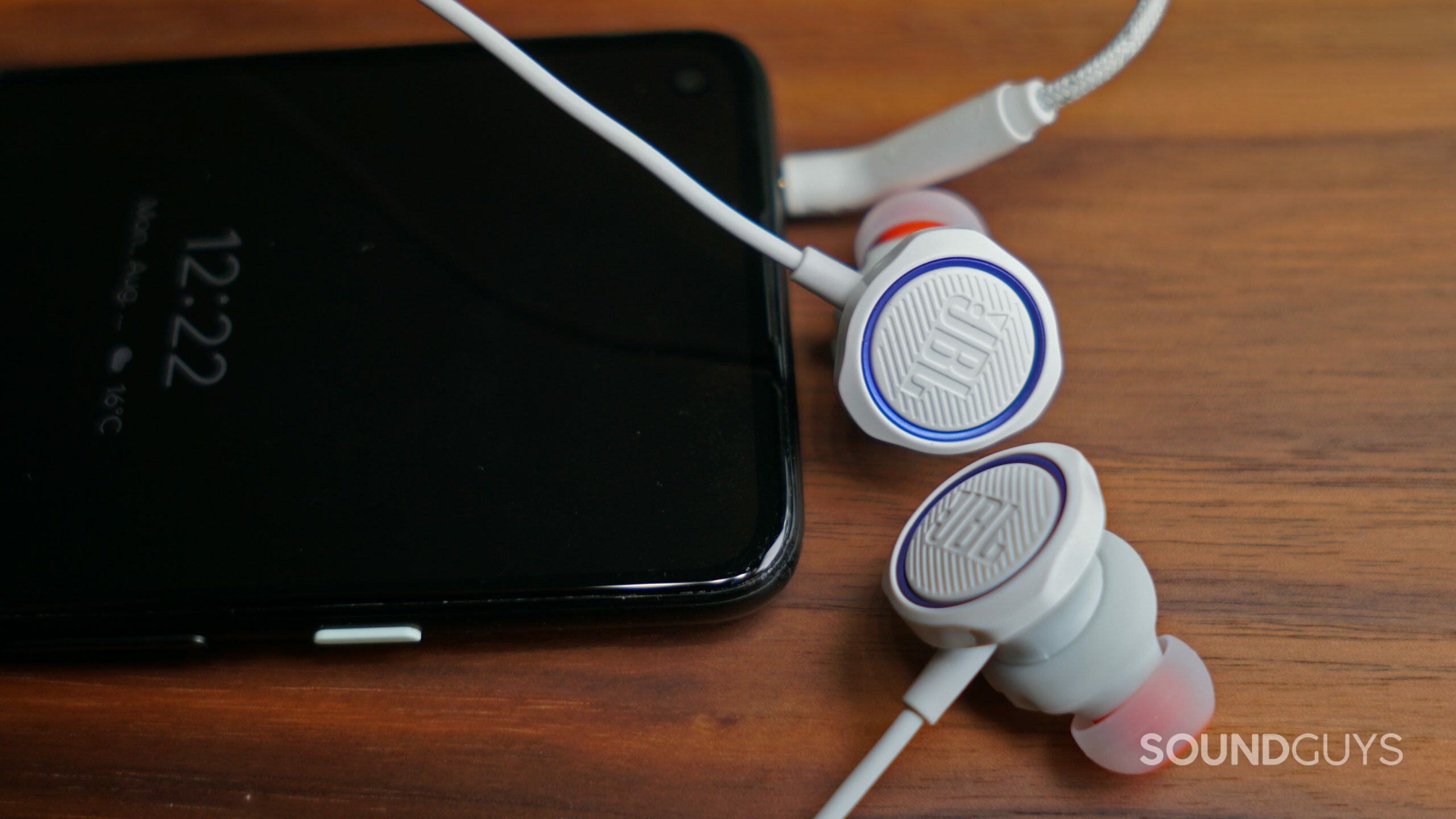
Consider the ROCCAT Syn Buds Core if you want something cheaper than JBL’s earbuds with a louder bass output. This no-nonsense pair of earbuds comes with three different sized ear tips (small, medium, large), so you can find the best fit for you. Be aware: those with exceptionally small ear canals may find the Syn Buds Core uncomfortable, even with the smallest tip option.
Frequently asked questions about the Razer Hammerhead Duo
Seeing how this is a wired pair of earbuds, there’s no true mono mode. Instead, you can just listen with one earbud in and keep the other out. Since Razer doesn’t include a way to manage the cable, you may need to tuck the other earbud cable into your shirt to keep it out of the way.